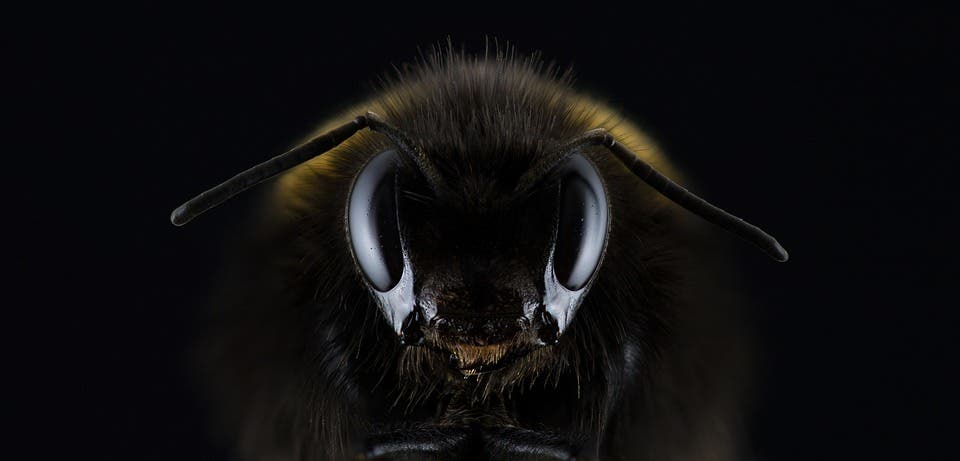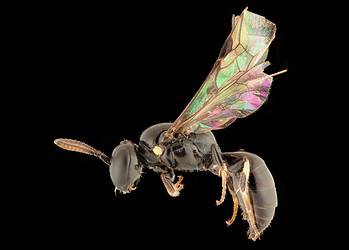An analysis of honey samples from locations all around the world showed that 75% of them were contaminated with pesticides known to harm bees. About half of the samples actually contained a cocktail of potentially harmful chemicals, besides the neonicotinoid pesticides.

Previously, this class of pesticides has been identified by scientists as the most likely cause of colony collapse disorder (CCD) — a strange phenomenon where adult worker honeybees simply disappear from the hives, almost simultaneously, leaving behind the queen and immature bees which could no longer care for themselves. As the name implies, the colony simply collapses.
Honeybees are exposed to this pesticide because its residue is found in nectar and pollen. In fact, it persists in the soil and in woody plants for up to six years after application. While a strong direct link between colony collapse disorder and neonicotinoids has not yet been established, it is increasingly clear that after exposure to these pesticides, honeybees become more susceptible to parasites and pathogens. One study also found that neonicotinoids could prevent the bumblebee queen from laying eggs. Between 2008 and 2013, wild bee diversity in the US dropped by 23 percent, and a previously common bumblebee species was recently listed as endangered.
And it’s not just honeybee populations that are collapsing. Monarch butterflies have been declining significantly, reaching the lowest count ever recorded during the 2013-14 as a result of habitat loss, particularly the loss of milkweed (the species’ only food source), and mortality caused by the use of pesticides. West North America lost 95% of its Monarch butterflies over the last 35 years, according to a distressing recent report.
The long arm of pesticides
Since the first episodes were identified in 2006, CCD has turned into an environmental crisis. Today, most bee species are in decline, with annual regional losses as high as 60%. Bees are some of the world’s most important pollinators, being responsible for about one-third of the plant we eat — a service worth hundreds of billions in the worldwide economy.
The ecological contribution of bees is of course invaluable. Countless species of plants and the animals that feed upon these plants depend on bee pollination for their survival. Where bees disappear, ecosystems are impacted in a cascading effect which is difficult to predict. One thing’s for sure: things aren’t good, and they’re not likely to get better, new research shows.
A new study published in the journal Science joins a body of evidence that suggests pesticides are dramatically interfering with bee foraging and pollination. The international team of researchers analyzed honey samples from nearly 200 hives spread throughout the world. The samples were collected and donated by citizen scientists as part of a project launched by the Botanical Garden of Neuchâtel, Switzerland, in 2016.
“Finding neonicotinoids in honey is perhaps not surprising,” says lead author Christopher Connolly of the University of Dundee, UK. After all, the pesticides are widely used. “But to find neuroactive levels, in so many samples at many global sites, is shocking.”
About 75% of all samples contained measurable quantities of pesticides, which was surprising given that the coverage also included highly remote locations like oceanic islands. About half of the samples contained a mix of various insecticides.
The concentrations of pesticides involved are very low but these chemicals are extremely toxic, up to 10,000 times more potent than DDT, one of the first pesticides of widespread use. DDT was banned for agricultural uses worldwide by the 2001 Stockholm Convention on Persistent Organic Pollutants.
The highest contamination rates were reported in North America with 86% of samples containing one or more neonicotinoid pesticides. Asia, Europe, and South America followed, with 80%, 79%, and 57% of samples containing pesticides, respectively. The EU introduced a partial ban on neonicotinoids back in 2013, but the European honey samples included in the analysis was sourced before the legislative measure was installed.
“If you look at the minimum concentration for which a significant negative impact on bees has been found, then 48% of our samples exceed this level,” said Professor Edward Mitchell at the University of Neuchâtel.
Neonicotinoids were introduced the mid-1990s. The group consists of various pesticides that are based on the chemical structure of nicotine, and attack the nervous systems of insect pests. But bees, wasps, butterflies, and other insect pollinators seem to have been caught in the cross-fire.
According to a 2014 review, neonicotinoids might seriously jeopardize worldwide food security with far-reaching consequences. Three types of pesticides in this class have been banned in the EU for flowering plants, and the appropriate EU commission is now working on a draft that will ban neonicotinoids from all plants. Other countries will surely follow, hopefully with a worldwide ban similar to DDT — for everyone’s sake.






